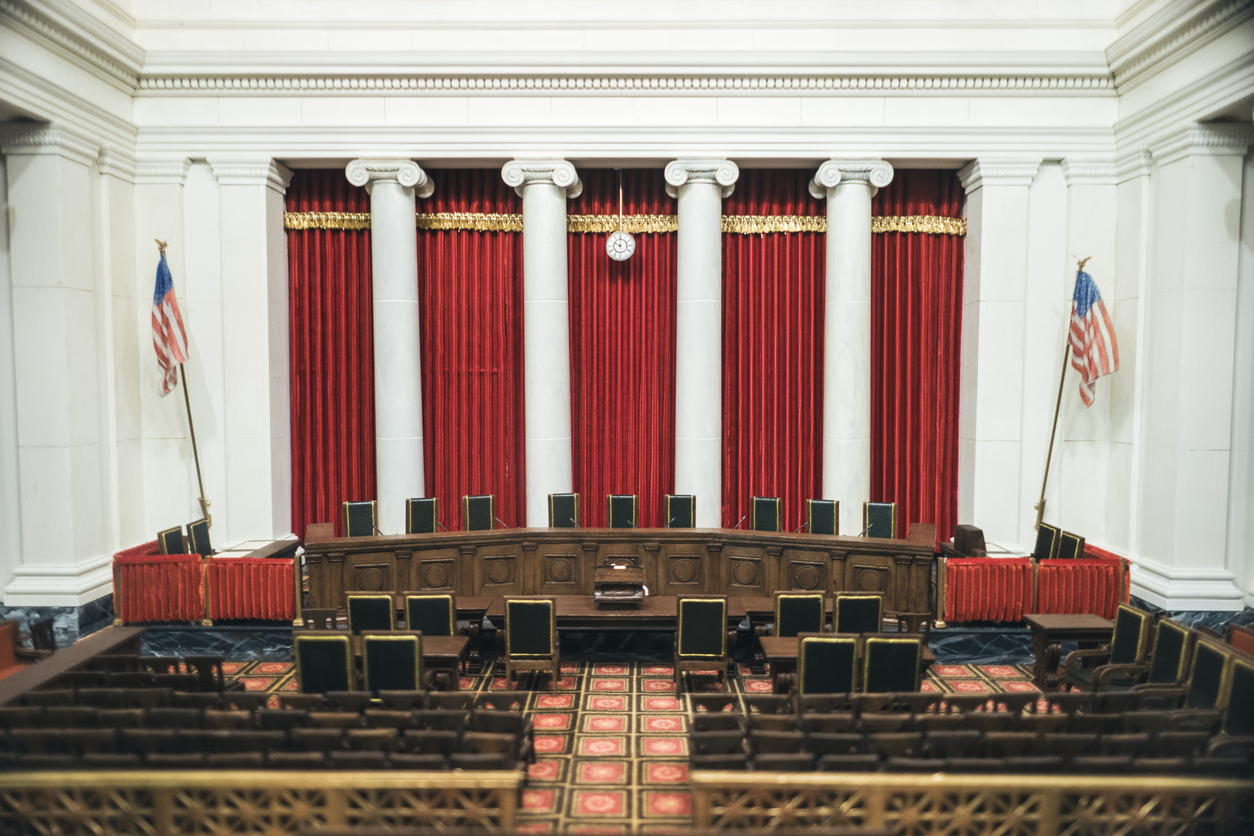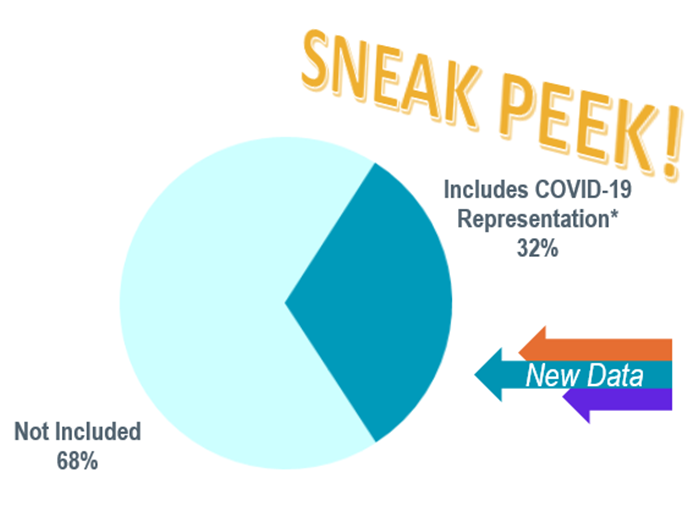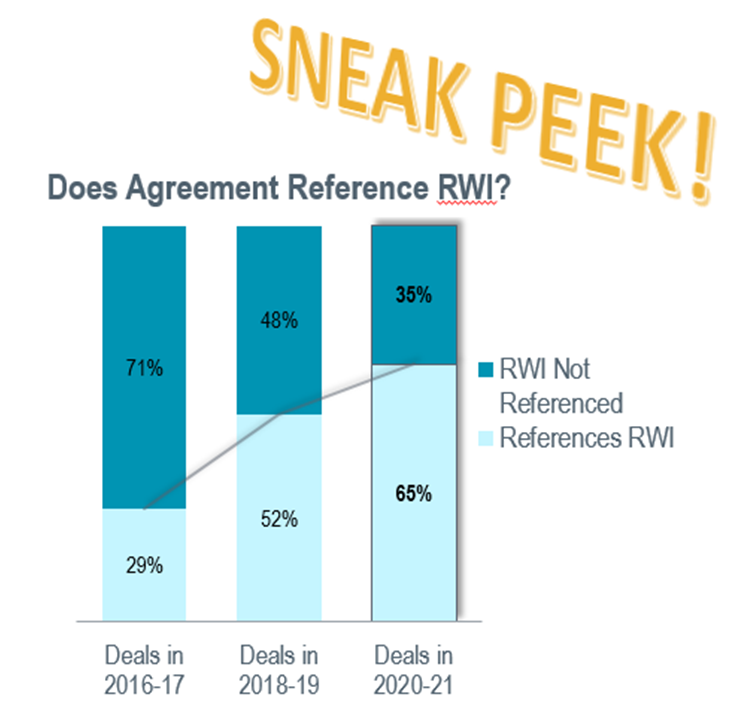
I. Introduction
In its heyday, the common law treated injury causes of action[1] as purely personal in character.[2] From this assumption followed the hoary doctrine, naturally entombed in Latin (Actio personalis moritur cum persona), that held all such claims to be extinguished upon the death of the injured individual.[3] Ironically, this theorem may have encouraged the most maleficently negligent to evade liability by ensuring the victim’s injuries were so severe as to lead to their untimely expiration.[4] To foreclose the realization of similar ghoulish possibilities, every state as well as the District of Columbia eventually adopted so-called survival statutes.[5] Where these enactments reign, “no cause of action dies with the person.”[6] As such, in the modern United States, a decedent’s state-law claim for damages for a proven injury routinely continues as an asset of an estate for some specified period of time,[7] with libel and slander frequently excluded by legislative enactment[8] or judicial interpretation.[9]
In the decades after these laws’ explosive spread petered out, Congress codified a diverse array of rights in federal statutory law over the last 50 years. Yet, as to causes of action created by these enactments, its ruling majorities seldom, if ever, wrestled with the eldritch problem otherwise resolved by the prototypical survival act.[10] Compelled to confront this omission, federal courts opted to adopt a unique set of principles to guide their determination of which third parties enjoy the standing to assert a decedent’s cause of action under various federal consumer protection statutes, including the Fair Debt Collection Practices Act (FDCPA), Truth in Lending Act (TILA), and Real Estate Settlement and Practices Act (RESPA). This article devotes itself to clarifying this jurisprudence’s general doctrines and elucidating their specialized application to the FDCPA.
II. Tales of the Undead[11]
A. The Finches
Born in 1929, Ms. Gladys J. Finch died on October 21, 1989, at the age of 60, survived by two daughters and three sons. At the time, she lived with one daughter, Ms. Betty Wright. In April 1990, a court appointed Wright as executrix of her mother’s estate. After Finch’s passing, Finance Service of Norwalk, Inc. (Finance Service), a debt collection agency, sent 14 letters addressed to Finch in an attempt to collect $112 from her for an allegedly overdue, and long since forgotten, medical bill. Acting as executrix for Finch’s estate, Wright admittedly opened and purportedly read every one of these communiques. Only after receipt of the 14th such missive did she contact Finance Service with news of her mother’s death, prompting the apologetic entity to put a stop to any future dispatches. Having tabulated 30 purported violations of the FDCPA, Wright replied in the American manner: she launched a lawsuit against Finance Service in the United States District Court for the Northern District of Ohio in the fall of 1990.
B. The Walkers
Nearly a decade later, James Walker moved into his mother’s weather-beaten mobile home, serenely parked upon the Colorado Plateau and within the Arizona borders of the Navajo Nation, soon after her death. Long before that dark night, Walker’s mother had signed a retail installment contract and security agreement for her wheel-graced house; by the time of her death, a sizable arrearage had formed. Ultimately, R. Ruben Gallegos, an attorney based in Albuquerque, New Mexico, filed a Petition for Order Allowing Repossession of Collateral in one of the Navajo Nation’s district courts (Navajo Court) on behalf of the creditor who then possessed the relevant financial instruments encumbering Walker’s latest homestead. Crucially, this petition named Walker as the defendant due to his ongoing occupation of and control over his mother’s former home. In response, Walker sued Gallegos under the FDCPA based on the latter’s purported misrepresentations to the Navajo Court as to the nature—indeed, the reality—of Walker’s responsibility for his mother’s past financial lapses. Walker’s underlying theory lacked either complexity or novelty: by pegging him and him alone as a defendant even though he “was not a party to the financing contract and had never assumed the debt for the mobile home after his mother’s death,” Gallegos had flouted the FDCPA’s prohibition on knowing misrepresentations.
III. Statutory Background: The FDCPA
A. Design and Purpose
The chief federal statute regulating debt collection since it went into effect on March 20, 1978, the FDCPA establishes the general standards for verboten collector conduct, defines and restricts certain collection acts, and affords consumers specific rights and remedies.[12] As Congress explained in 1977, “abundant evidence of the use of abusive, deceptive, and unfair debt collection practices by many debt collectors” could be marshalled, these “[a]busive debt collection practices contribut[ing] to the number of personal bankruptcies, to marital instability, to the loss of jobs, and to invasions of individual privacy.”[13] In the preceding years, “[e]xisting laws and procedures for redressing these injuries” had proven “inadequate to protect consumers”[14] in that creditors allegedly preferred these tactics, “carried on to a substantial extent in interstate commerce and through means and instrumentalities of such commerce,” to “[m]eans other than misrepresentation or other abusive debt collection practices . . . [otherwise] available for the effective collection of debts.”[15] So animated, the FDCPA strives to achieve three goals: “eliminat[ing] abusive debt collection practices by debt collectors, . . . insur[ing] that those debt collectors who refrain from using abusive debt collection practices are not competitively disadvantaged, and . . . promot[ing] consistent State action to protect consumers against debt collection abuses.”[16] In spite of this determination to eliminate certain prevalent practices in accordance with these aims, in its drafting of the FDCPA, Congress shied away from innovation and instead mostly supplemented and expanded upon existing debt-collection regulations.[17] As a result, a rough equipoise lies within the FDCPA’s core: a strict liability statute, with consumers able to prove a violation concurrently empowered to win summary judgment against a debt collector, the FDCPA was not fashioned to allow these same consumers to circumvent freely assumed and legally valid payment obligations.[18]
B. Scope
The FDCPA limits its scope to “debt collector[s]” pursuing “consumer[s]” and “acting on behalf of, but unaffiliated with, the actual creditor.”[19] For its purposes, “‘consumer’ means any natural person obligated or allegedly obligated to pay any debt,”[20] and “‘debt’ means any obligation or alleged obligation of a consumer to pay money arising out of a transaction in which the money, property, insurance, or services which are the subject of the transaction are primarily for personal, family, or household purposes, whether or not such obligation has been reduced to judgment.”[21] As a result of its codification of these sweeping denotations and inclusion of the adverb “allegedly,” the FDCPA thus applies to all obligations to pay money that arise out of consensual consumer transactions, regardless of whether credit has been offered or extended,[22] and holds debt collectors liable for various abusive, deceptive, and unfair debt collection practices, regardless of whether the debt is valid.[23]
Less obvious than the foregoing definitions, the FDCPA used “the term ‘creditor’” to “mean[] any person who offers or extends credit creating a debt or to whom a debt is owed, but . . . does not include any person to the extent that he receives an assignment or transfer of a debt in default solely for the purpose of facilitating collection of such debt for another.”[24] Instead, “debt collector[s],” explicitly defined as “person[s] who use[] any instrumentality of interstate commerce or the mails in any business the principal purpose of which is the collection of any debts, or who regularly collect[] or attempt[] to collect, directly or indirectly, debts owed or due or asserted to be owed or due another,” fall into the latter category.[25] In effect, the FDCPA damns as “debt collectors” such entities as “debt collection agencies, creditors using false names or collecting for other creditors, collection attorneys, purchasers of delinquent debts, repossession companies, and suppliers or designers of deceptive forms.”[26]
Reasonably enough, not all aspects of the typical debt collection process concerned the FDCPA’s original congressional advocates and thus came within its ken. Instead, this statute generally prohibits only abusive or deceptive activities once, if not still, commonly undertaken in the collection of consumer debts.[27] To wit, commercial obligations lie outside its purview.[28] Further limiting its reach, the FDCPA’s delineation of “debt collector” has always excluded “[a] consumer’s creditors” and both “a mortgage servicing company, or any assignee of [a predefaulted] debt.”[29] Overall, five entities—creditors collecting their own debts, banks, retail stores, finance companies, and government employees—and one financial instrument—business debt—still consistently fall outside of the FDCPA’s various environs.
C. Explicit Prohibitions: Consumers and Third Parties
As a practical matter, the FDCPA places restrictions on the manner in which debt collectors may contact consumers regarding a consumer debt, specifying where, when, and how a debt collector may communicate with any burdened consumer.[30] It prohibits three broad classes of behavior: “any conduct the natural consequence of which is to harass, oppress, or abuse any person in connection with the collection of a debt,” with six nonexclusive examples adumbrated;[31] “any false, deceptive, or misleading representation or means in connection with the collection of any debt,” with sixteen examples adduced;[32] and “unfair or unconscionable means to collect or attempt to collect any debt,” with eight examples appended.[33] Sections regarding the validation of debts,[34] priority of payments made by consumers with multiple debts,[35] proper venue,[36] and furnishing of “certain deceptive forms”[37] round out the act’s consumer-centric provisions.
In spite of its consumer cynosure, the FDCPA regulates debt collectors’ communications with other “person[s]” too.[38] In point of fact, it painstakingly proscribes collector contact with such third parties except in closely regulated situations.[39] Thus, if contacting this coterie for “the purpose of acquiring location information about the consumer,” a debt collector must avoid certain behaviors and provide precisely delineated information, as set forth in section 1692b.[40] For example, a debt collector may “not communicate with any such person more than once unless requested to do so by such person or unless the debt collector reasonably believes that the earlier response of such person is erroneous or incomplete and that such person now has correct or complete location information.”[41] Similarly, once “the debt collector knows the consumer is represented by an attorney with regard to the subject debt,” the FDCPA forbids any further communications with a third person “unless the attorney fails to respond within a reasonable period of time to communication from the debt collector.”[42] Beyond this provision, the FDCPA bars a debt collector from “communicat[ing], in connection with the collection of any debt, with any person other than the consumer, his attorney, a consumer reporting agency if otherwise permitted by law, the creditor, the attorney of the creditor, or the attorney of the debt collector” unless prior consent or judicial permission has been given or such contact is “reasonably necessary to effectuate a postjudgment judicial remedy.”[43]
IV. Precedent’s Explication
Absent a specific statutory directive,[44] federal common law settles the question of survival of a federal statutory cause of action upon the demise of the alleged victim.[45] Over the last 30 years, without the aid of any meaningful congressional guidance, federal courts have molded a peculiar series of rules as to the propriety of that cause’s descent. As precedent demands,[46] these jurists have first looked to the relevant statutory language, but proceeded to weigh other contextual factors, including embedded purpose, in the hope of a consensus’s construction, always consulting federal common law even as to statutes with state analogues or derived from state predecessors.[47] In spite of persistent outliers, this effort ultimately netted a coherent, if complicated, approach to this macabre dilemma.
A. Prevalent Approach: Construction of Related Federal Statutes
By custom and command, any construction of a nonconsumer’s standing under the FDCPA must begin with its particularly defined classes of possible claimants: “consumer” and any “person other than the consumer.”
As utilized within the FDCPA, these terms’ expansive ambits pointedly contrast with the narrower classifications central to other federal consumer statutes’ operations. For example, the Equal Credit Opportunity Act (ECOA) renders “[a]ny creditor who fails to comply with any [of its] requirement[s] . . . liable to the aggrieved applicant for any actual damages sustained by such applicant acting either in an individual capacity or as a member of a class.”[48] Accordingly, “only ‘applicants’ have the ability to sue for ECOA violations.”[49] As “[t]he term ‘applicant’ means any person who applies to a creditor directly for an extension, renewal, or continuation of credit, or applies to a creditor indirectly by use of an existing credit plan for an amount exceeding a previously established credit limit,”[50] ECOA’s “plain language . . . unmistakably provides that a person is an applicant only if she requests credit.”[51] Pursuant to this prevalent reading, ECOA cannot be read to allow for derivative standing by any successor, even a legal one, to the original “aggrieved applicant.” Another similarly designed statute—RESPA—restricts its coverage to “borrowers,”[52] thereby stripping a cause of action from any third party not identified as a “borrower” in the relevant contracting documents,[53] including a potential plaintiff who receives title to the property solely as a result of a familial borrower’s death.[54] A general presumption girds these decisions: “A person who is not a party to a contract does not have standing either to seek its enforcement or to bring tort claims based on the contractual relationship.”[55] Consequently, at least as to these statutes with superficially narrow definitions, courts have not hesitated to constrict third parties’ standing to pursue a cause of action technically held by a related “borrower” or “applicant.”
When a federal statute codifies more expansive meanings than those in RESPA or ECOA, however, a far more liberal interpretive penchant has been readily indulged. At least one law closely related to the FDCPA, for instance, has been consistently construed: TILA. Enacted as part of the Consumer Credit Protection Act of 1968 and codified at 15 U.S.C.S. § 1601 et seq., TILA renders “[a]ny creditor who fails to comply with any requirement imposed under this part. . . with respect to any person . . . liable to such person.”[56] Certainly, in contrast with “borrower” or “aggrieved applicant,” TILA’s “person” is an inherently nebulous and infinitely malleable term. Moreover, in light of the “generally remedial purpose of TILA,”[57] courts treat this statute as meriting an expansive construction informed by the congressionally recognized need to “remedy abuses resulting from consumer ignorance of the nature of credit arrangements.”[58] In light of these twin facts—its reference to “persons” and its nonpenal character—most federal courts allow TILA actions to survive the obligor’s death and to be maintained by their legally recognized successor, including an estate’s administrator or personal representative.[59] Crucially, however, occasional cacophony disrupts even this noticeably popular construal.[60]
B. Return to the FDCPA
1. Overview: Debt Collectors’ Liability to Third Parties
In FDCPA jurisprudence, these disparate jurisprudential strains reappear, with the analytical prominence of each dependent upon a court’s understanding of two longstanding juridical verities. First, unlike ECOA or RESPA but similar to TILA, the FDCPA renders a “debt collector” liable to “any person,”[61] but “does not define what it means for a failure of compliance to be ‘with respect to any person.’”[62] Second, the FDCPA seeks “to protect consumers who have been victimized by unscrupulous debt collectors”;[63] accordingly, a debt collector’s unsavory activities and their negative effects on consumers both individually and as a class mattered most to Congress in 1968 and demand the most diligent judicial solicitude through the present day. Consistent with this aim, courts tend to imbue section 1692k, “couched in the broadest possible language,”[64] with sufficient elasticity to permit “[a]ny person who comes in contact with proscribed debt collection practices” to bring an FDCPA claim.[65] Guided by these touchstones—and thus unfettered by the explicitly tailored denotations enthroned in ECOA and RESPA and inclined to view the FDCPA as an essentially remedial statute—federal courts have consistently extended liability under this statute’s nonconsumer-specific provisions[66] to nonconsumer third parties whenever those persons (1) stand in the shoes of the debtor as a matter of law, or (2) plead a statutorily cognizable injury, often inadvertently inflicted during a debt collector’s attempt to contact the contractually bound consumer.[67]
2. First Method: Outright Substitution
The first basis has proven far less problematic in application but more controversial in practice. Courts invoking it have taken “a section-by-section approach to standing under the FDCPA”[68] and accorded this status to such third parties under sections 1692d and 1692e as a decedent’s executor[69] or the estate’s representative[70] as well as any person who, at the time of the suit, actually enjoyed control over the deceased debtor’s assets.[71] Within this jurisprudence, any person who bears actual responsibility for paying any decedent’s debt can be tagged as a “consumer” automatically endowed with the derivative ability to sue even a debt collector ignorant of the original debtor’s passing.[72] Tellingly, in applying this doctrine, these similarly inclined courts have split over the one FDCPA section—section 1692c—to refer to such common third parties. For the majority, section 1692c affords a decisive textual anchor in that it explicitly defines the term “consumer” to include “the consumer’s spouse, parent (if the consumer is a minor), guardian, executor, or administrator.”[73] Emphasizing the implicit intention of this explicit expansion of “consumer,” some courts limit third-party standing under this section to these named classes,[74] effectively barring any expansion of their third-party standing doctrine as to both this section and correspondingly worded analogues.[75] However, where no such express reference to “consumer” appears (and as one circuit noted, 1692c “appears to be the most restrictive of the FDCPA’s provisions” in that others “are not limited to ‘consumers,’ and thus are broader than § 1692c”[76]), these courts imbue executors and representations, spouses and parents, and all persons who wield legal authority over an estate’s assets, whether by contract, statute, or judicial writ, with the requisite standing to sue for a debt collector’s FDCPA violations against another.[77]
3. Second Method: Independent and Derivative Injury
Enamored of an alternative rationale, other courts find standing only when the person who was not alleged to be the debtor suffered some direct action, subject to the FDCPA, undertaken by a debt collection agency in its attempts to track down the actual named debtor.[78]
Examples of this approach abound. Thus, in Thomas v. Consumer Adjustment Co., the third party found to have standing to sue endured two direct phone conversations with the debt collector.[79] In another case, the oft-cited Whatley v. Universal Collection Bureau Inc. (Florida), the parents of a debtor gained their standing due to the debt collector’s decision to leave threatening messages to the debtor and his parents on the family answering machine.[80] The decision in Dutton v. Wolhar rested its conclusion on the uncontested fact that a letter that formed the basis of the FDCPA claim was sent to the plaintiffs at their home address attempting to collect a debt owed by the plaintiffs’ deceased parents.[81] And in West v. Costen, the mother of a debtor received, addressed to her at her address, a collection letter attempting to collect on her son’s debts.[82] Simply put, “[p]ersons who do not owe money but are subject to improper practices by debt collectors are covered by the FDCPA,”[83] a position defended as consistent with this statute’s legislative history.[84] Arguably, the Supreme Court’s decision in Spokeo, Inc. v. Robins[85] allows for no other form of third-party standing.[86]
For certain adherents of this approach, a corollary follows: “[a] third-party, non-debtor” simply “does not have standing to assert a FDCPA violation based on collection efforts aimed at someone else,” even if they themselves suffered the purportedly verboten conduct.[87] As this story goes, by enacting the FDCPA, Congress “did not intend to provide damages to those who did not experience any abusive behavior.”[88] Instead, the FDCPA punishes debt collectors for contacts with third persons, other than to obtain a debtor’s location, that “result in serious invasions of privacy, as well as loss of jobs.”[89] If one construes the FDCPA in accordance with this singularly verifiable purpose, a third-party nondebtor must be conferred statutory standing only when the alleged debt collection practices were actually directed towards that specific person.[90] By such contextual routes, these courts depart from the growing number who afford far more purely derivative standing to noninjured parties related only to an actually impacted consumer.
V. Conclusion
The Haitian-derived “zombie” myth[91] infiltrated American pop culture via the colorful and satirical imagination of George A. Romero in the late 1960s and 1970s,[92] more than 30 years after 1932’s White Zombie seeded the notion in the fertile American imagination.[93] Never the focus of the U.S. creative class, the typical survival act bequeathed such a posthumous existence to countless legal claims and denied a few from such a Lazarus-like fate. Unlike the states, however, Congress has not passed any similar laws or included any similar provisions—its habitual inattention leaving the federal courts free to decide which claims under which laws merit such post-mortem treatment. In explicating the FDCPA, this assemblage has relied upon rationales drawn from their RESPA, TILA, and ECOA precedents. A named debtor’s death, this majority has now proclaimed, will not nullify all possible liability in every case—death’s once automatic consequence circumvented by virtue of incantations not nearly as haunting (and, just maybe, more effective) as the still occasionally emitted chants of the latest generation of bokors and caplatas.[94]
* A former law clerk to federal judges in California, Florida, Louisiana, and New York, Amir Shachmurove is an associate at Reed Smith LLP. As common sense and custom dictate, the views expressed and the mistakes made herein are his alone and should be attributed to neither friends nor employers, past or present. Similarly, having been written solely for information purposes, nothing in this article is intended to be and should be taken as legal advice.
[1] In the esoteric debate over this deathly issue, commentators have drawn a distinction between a cause of action and an action pending at the time of death. Luke DeGrand, Note, Challenging the Exclusion of Libel and Slander from Survival Statutes, 1984 U. Ill. L. Rev. 423, 424 n.10 (1984). Within this literature, and here, the former refers to the right to sue, the latter to a suit already filed. Id.
[2] Harris v. Nashville Tr. Co., 162 S.W. 584, 586–87 (Tenn. 1913) (summarizing the common law’s presumptions); Bowen E. Schumacher, Rights of Action under Death and Survival Statutes, 23 Mich. L. Rev. 114, 114 (1924) (discussing historical background of modern survival laws).
[3] Schumacher, supra note 2, at 114. Confusingly, courts sometimes deemed the cause to have survived, but denied the capacity to assert it to the decedent’s noninjured successors.
[4] Robert D. VanHorne, Wrongful Death Recovery: Quagmire of the Common Law, 34 Drake L. Rev. 987, 988–89 (1985–86).
[5] DeGrand, supra note 1, at 424.
[6] Fla. Stat. § 46-021; see also, e.g., Ky. Rev. Stat. § 411.140; Neb. Rev. Stat. § 25-1401; N.C. Gen. Stat. § 28A-18-1.
[7] See Henry Woods, Comparative Negligence in Oklahoma—A New Experience, 28 Okla. L. Rev. 1, 13–14 (1975) (canvassing many of these early statutes).
[8] Ariz. Rev. Stat. Ann. § 14-3110. The Arizona statute also exempts actions for breach of promise to marry, seduction, separate maintenance, alimony, loss of consortium, and invasion of the right of privacy. Id.
[9] See, e.g., Mitsubu Publ’g Co. v. State, 620 P.2d 771, 772 (Haw. 1980) (parsing Hawaii’s survival statute); Carter v. Morrow, 48 S.E.2d 814, 818 (S.C. 1948) (construing South Carolina’s version).
[10] See Note, Survival of Actions Brought under Federal Statutes, 63 Colum. L. Rev. 290, 290 (1963) (so observing).
[11] Though drawn from two cases, Wright v. Fin. Serv., 22 F.3d 647 (6th Cir. 1994), and Walker v. Gallegos, No. CV 00-1231 PCT PGR, 2002 U.S. Dist. LEXIS 25682, 2002 WL 31990400 (D. Ariz. Dec. 19, 2002), the stories recounted in this section have been edited for emphasis and effect.
[12] S. Rep. No. 95-382, at 2 (1977).
[13] 15 U.S.C. § 1692(a); Mace v. Van Ru Credit Corp., 109 F.3d 338, 343 (7th Cir. 1997).
[14] 15 U.S.C. § 1692(b); Gonzales v. Arrow Fin. Servs., LLC, 660 F.3d 1055, 1069 (9th Cir. 2011).
[15] 15 U.S.C. § 1692(c)–(d); Bishop v. Ross Earle & Bonan, P.A., 817 F.3d 1268, 1271 (11th Cir. 2016).
[16] 15 U.S.C. § 1692(e); see also Richmond v. Higgins, 435 F.3d 825, 828 (8th Cir. 2006) (limning FDCPA’s purpose).
[17] Jeter v. Credit Bureau, Inc., 760 F.2d 1168, 1174 (11th Cir. 1985).
[18] E.g., Bishop, 817 F.3d at 1271; Lynn A. S. Araki, RX for Abusive Debt Collection Practices: Amend the FDCPA, 17 U. Haw. L. Rev. 69, 77 (1995).
[19] Thomas D. Crandall et al., Debtor-Creditor Law Manual § 5-41 (1985).
[20] 15 U.S.C. § 1692a(3); Dunham v. Portfolio Recovery Assocs., LLC, 663 F.3d 997, 1001 (8th Cir. 2011).
[21] 15 U.S.C. § 1692a(5); Pollice v. Nat’l Tax Funding, L.P., 225 F.3d 379, 401 (3d Cir. 2000).
[22] Pollice, 225 F.3d at 401. A narrower understanding of “debt” has been rejected. See, e.g., Romea v. Heiberger & Assocs., 163 F.3d 111, 114 n.4 (2d Cir. 1998); Brown v. Budget Rent-A-Car Sys., Inc., 119 F.3d 922, 924 n.1 (11th Cir. 1997); Bass v. Stolper, Koritzinsky, Brewster & Neider, 111 F.3d 1322, 1325–26 (7th Cir. 1997).
[23] Schroyer v. Frankel, 197 F.3d 1170, 1178 (6th Cir. 1999); see also Baker v. G. C. Servs. Corp., 677 F.2d 775, 777 (9th Cir. 1982).
[24] 15 U.S.C. § 1692a(4) (emphasis added); Schlosser v. Fairbanks Capital Corp., 323 F.3d 534, 536 (7th Cir. 2003).
[25] 15 U.S.C. § 1692a(6); Vien-Phuong Thi Ho v. Recontrust Co., NA, 858 F.3d 568, 575 (9th Cir. 2017).
[26] Robert J. Hobbs et al., Fair Debt Collection 69 (3d ed. 1996).
[27] 15 U.S.C. § 1692.
[28] Crandall, supra note 19, at 5–41.
[29] Lal v. Am. Home Servicing, Inc., 680 F. Supp. 2d 1218, 1224 (E.D. Cal. 2010).
[30] 15 U.S.C. § 1692c(a), (c). Notably, “for the purpose of this section, the term ‘consumer’ includes the consumer’s spouse, parent (if the consumer is a minor), guardian, executor, or administrator.” Id. § 1602c(d).
[31] 15 U.S.C. § 1692d; Harvey v. Great Seneca Fin. Corp., 453 F.3d 324, 329–30 (6th Cir. 2006).
[32] 15 U.S.C. § 1692e; Ruth v. Triumph P’ships, 577 F.3d 790, 797–98 (7th Cir. 2009).
[33] 15 U.S.C. § 1692f; LeBlanc v. Unifund CCR Partners, 601 F.3d 1185, 1200–01 (11th Cir. 2010).
[34] 15 U.S.C. § 1692g; Smith v. Transworld Sys., Inc., 953 F.2d 1025, 1028–29 (6th Cir. 1992).
[35] 15 U.S.C. § 1692h; Camacho v. Bridgeport Fin., Inc., 430 F.3d 1078, 1082 (9th Cir. 2005).
[36] 15 U.S.C. § 1692i; Suesz v. Med-1 Solutions, LLC, 757 F.3d 636, 639 (7th Cir. 2014).
[37] 15 U.S.C. § 1692j; Clomon v. Jackson, 988 F.2d 1314, 1321 n.1 (2d Cir. 1993).
[38] 15 U.S.C. § 1692b; Swanson v. S. Or. Credit Serv., 869 F.2d 1222, 1228 (9th Cir. 1988).
[39] For an overview, see Federal Trade Commission, Report to Congress Regarding Fair Debt Collection Practices Act (1998).
[40] 15 U.S.C. § 1692b; Evankavitch v. Green Tree Servicing, LLC, 793 F.3d 355, 362 (3d Cir. 2015).
[41] 15 U.S.C. § 1692b(3) (emphasis added); see Worsham v. Accounts Receivable Mgmt., 493 F. App’x 274, 277 (4th Cir. 2012) (analyzing § 1692b generally).
[42] 15 U.S.C. § 1692b(6); Guerrero v. RJM Acquisitions LLC, 499 F.3d 926, 935 n.2 (9th Cir. 2007).
[43] 15 U.S.C. § 1692c(b); Edwards v. Niagara Credit Solutions, Inc., 584 F.3d 1350, 1351–52 (11th Cir. 2009).
[44] See 42 U.S.C. § 1988.
[45] Smith v. No. 2 Galesburg Crown Fin. Corp., 615 F.2d 407, 413 (7th Cir. 1980); cf. Fed. R. Civ. P. 25(a)(1) (“If a party dies and the claim is not extinguished, the court may order substitution of the proper party.”). Once contested, this rule is now firmly established.
[46] See Amir Shachmurove, Purchasing Claims and Changing Votes: Establishing “Cause” Under Rule 3018(a), 89 Am. Bankr. L.J. 511, 528–33 (2015) (setting forth the courts’ regnant interpretive paradigm).
[47] Cf. Smith v. No. 2 Galesburg Crown Fin. Corp., 615 F.2d 407, 413 (7th Cir. 1980) (holding that federal common law governs whether a claim under TILA survives in favor of the administrator of a deceased plaintiff); James v. Home Constr. Co. of Mobile, Inc., 621 F.2d 727, 729 (5th Cir. 1980) (same).
[48] 15 U.S.C. § 1691e(a) (emphasis added).
[49] RL BB Acquisition, LLC v. Bridgemill Commons Dev. Grp., LLC, 754 F.3d 380, 384 (6th Cir. 2014); see also F.D.I.C. v. 32 Edwardsville, Inc., 873 F. Supp. 1474, 1480 n.2 (D. Kan. 1995) (same).
[50] 15 U.S.C. § 1691a(b).
[51] Hawkins v. Cmty. Bank of Raymore, 761 F.3d 937, 942 (8th Cir. 2014) (refusing to classify “guarantors” as applicants), aff’d w/o opinion, 136 S. Ct. 19, 192 L. Ed. 2d 988 (2015). Multiple federal courts have concurred with this natural construction. See, e.g., Alexander v. AmeriPro Funding, Inc., 848 F.3d 698, 707 (5th Cir. 2017) (citing Hawkins, 761 F.3d at 941); Germain v. M&T Bank Corp., 111 F. Supp. 3d 506, 528 (S.D.N.Y. 2015) (same); cf. Evans v. First Fed. Sav. Bank of Ind., 669 F. Supp. 915, 922 (N.D. Ind. 1987) (“The[] statutory provisions [under the ECOA] clearly indicate that Congress meant to protect those individuals who actually apply for credit.”).
[52] 12 U.S.C. § 2605.
[53] See, e.g., Johnson v. Ocwen Loan Servicing, 374 F. App’x 868, 873–74 (11th Cir. 2010) (holding that plaintiff was not a borrower and thus lacked the essential standing); Estate of Dawson v. Ditech Fin., LLC, No. 4:17-cv-93, 2017 U.S. Dist. LEXIS 128148, at *8, 2017 WL 3471425, at *3 (E.D. Va. Aug. 11, 2017) (citing cases construing § 2605(f)); see also, e.g., Correa v. BAC Home Loans Servicing LP, 853 F. Supp. 2d 1203, 1207 (M.D. Fla. 2012) (“[A] defendant’s liability in a civil action under RESPA is limited to borrowers.”); Mitchell v. Mortg. Elec. Registration Sys., Inc., No. 1:11-cv-425, 2012 U.S. Dist. LEXIS 45083, at *4, 2012 WL 1094671, at *2 (W.D. Mich. Mar. 30, 2012) (following those cases holding that non-borrowers have no standing to bring claims under RESPA).
[54] E.g., Nelson v. Nationstar Mortg. LLC, No. 7:16-CV-00307-BR, 2017 U.S. Dist. LEXIS 45276, at *7–9, 2017 WL 1167230, at *3 (E.D.N.C. Mar. 28, 2017); Green v. Cent. Mortg. Co., No. 14-cv-04281-LB, 2015 U.S. Dist. LEXIS 117241, at *14–15, 2015 WL 5157479, at *4–5 (N.D. Cal. Sept. 3, 2015).
[55] Ambers v. Wells Fargo Bank, N.A., No. 13-cv-03940 NC, 2014 U.S. Dist. LEXIS 28291, at *13, 2014 WL 883752, at *4 (N.D. Cal. Mar. 3, 2014).
[56] 15 U.S.C.S. § 1640(a) (emphasis added).
[57] Smith, 615 F.2d at 413; accord Perry v. Beneficial Fin. Co. of New York, Inc., 88 F.R.D. 221, 222 (W.D.N.Y. 1980).
[58] Smith, 615 F.2d at 414; see also Deutsche Bank Nat’l Trust Co. v. Segarra, No. CV085018505S, 2011 Conn. Super. LEXIS 2941, at *4–5 (Conn. Super. Ct. Nov. 15, 2011) (collecting cases).
[59] James, 621 F.2d at 730; Abel v. Knickerbocker, 846 F. Supp. 445, 448 (D. Md. 1994).
[60] See, e.g., Wilson v. JP Morgan Chase Bank, No. CIV. 2:09-863 WBS GGH, 2010 U.S. Dist. LEXIS 63212, at *16–17, 2010 WL 2574032, at *6 (E.D. Cal. June 25, 2010) (plaintiff has no standing to request rescission because she was “not a party to the loan contract”); White v. Deutsche Bank Nat’l Trust Co., No. 09 CV 1807 JLS (JMA), 2010 U.S. Dist. LEXIS 89328, at *8–9, 2010 WL 3420766, at *3 (S.D. Cal. Aug. 30, 2010) (plaintiffs did not have standing under TILA because they were not owners of the property encumbered by the loan); Johnson v. First Fed. Bank of Cal., Nos. C 08-01796 PVT, C 08-00264 PVT, 2008 U.S. Dist. LEXIS 111020, at *8–11, 2008 WL 2705090, at *5 (N.D. Cal. Jul. 8, 2008) (holding a party who was not named in the loan papers was not a “consumer” under TILA and therefore had no standing to bring a TILA claim).
[61] 15 U.S.C. § 1692k.
[62] Sibersky v. Borah, Goldstein, Altschuler & Schwartz, P.C., 155 F. App’x 10, 11 (2d Cir. 2005).
[63] Baker v. G.C. Servs. Corp., 677 F.2d 775, 777 (9th Cir. 1982).
[64] Wright, 22 F.3d at 649.
[65] Riveria v. MAB Collections, Inc., 682 F. Supp. 174, 175 (W.D.N.Y. 1988).
[66] Compare 15 U.S.C. § 1692c, with id. § 1692d.
[67] Wright, 22 F.3d at 649–50; Sibersky, 155 F. App’x at 11–12; Guillory v. WFS Fin., Inc., No. C 06-06963 JSW, 2007 U.S. Dist. LEXIS 24910, at *6–7, 2007 WL 879017, at *2–3 (N.D. Cal. Mar. 21, 2007); Walker, 2002 U.S. Dist. LEXIS 25682, at *7, 2002 WL 31990400, at *1; Whatley v. Universal Collection Bureau, Inc., 525 F. Supp. 1204, 1204 (N.D. Ga. 1981).
[68] Barasch v. Estate Info. Servs., LLC, No. 07-CV-1693 (NGG)(MDG), 2009 U.S. Dist. LEXIS 79338, at *6, 2009 WL 2900261, at *2 (E.D.N.Y. Sept. 2, 2009).
[69] Wright, 22 F.3d at 650.
[70] Anderson v. Good Shepherd Hosp., Inc., No. CV 2:09-CV-112 (TJW), 2011 U.S. Dist. LEXIS 23457, at *12–14, 2011 WL 846091, at *5 (E.D. Tex. Mar. 7, 2011).
[71] Walker, 2002 U.S. Dist. LEXIS 25682, at *1–7, 2002 WL 31990400, at *2–4.
[72] Montgomery v. Huntington Bank, 346 F.3d 693, 697 (6th Cir. 2003).
[73] 15 U.S.C. § 1692c(d); see Montgomery, 346 F.3d at 697 (drawing a distinction between this section and sections 1692d and 1692e).
[74] Barasch, 2009 U.S. Dist. LEXIS 79338, at *4–10, 2009 WL 2900261, at *2–4.
[75] See Bank v. Pentagroup Fin., LLC, No. 08-CV-5293 (JG) (RML), 2009 U.S. Dist. LEXIS 47985, at *15, 2009 WL 1606420, at *4 (E.D.N.Y. June 9, 2009) (“Due to the broad language of § 1692k and the plain language of § 1692d, which is not limited in its applicability to consumers, a plaintiff who is not a consumer may have standing to assert a claim brought pursuant to § 1692d.”).
[76] Wright, 22 F.3d at 649 n.1.
[77] E.g., Burdett v. Harrah’s Kan. Casino Corp., 294 F. Supp. 2d 1215, 1227 (D. Kan. 2003); Wenrich v. Robert E. Cole, P.C., No. 00-2588, 2000 U.S. Dist. LEXIS 18687, at *8–12, 2001 WL 4994, at *3–4 (E.D. Pa. Dec. 21, 2000); Whatley, 525 F. Supp. at 1205–06.
[78] E.g., Thomas v. Consumer Adjustment Co., 579 F. Supp. 2d 1290, 1298 (E.D. Mo. 2008); Conboy v. AT&T Corp., 84 F. Supp. 2d 492, 504 n.9 (S.D.N.Y. 2000); Dewey v. Associated Collectors, Inc., 927 F. Supp. 1172, 1174–75 (W.D. Wis. 1996); Dutton v. Wolhar, 809 F. Supp. 1130, 1134–35 (D. Del. 1992); Riveria, 682 F. Supp. at 175; Whatley, 525 F. Supp. at 1205–06.
[79] 579 F. Supp. 2d at 1298.
[80] 525 F. Supp. at 1206.
[81] 809 F. Supp. at 1132.
[82] 558 F. Supp. at 584.
[83] Kerwin v. Remittance Assistance Corp., 559 F. Supp. 2d 1117, 1123 (D. Nev. 2008) (emphasis added).
[84] Wenrich, 2000 U.S. Dist. LEXIS 18687, at *11, 2001 WL 4994, at *4.
[85] 136 S. Ct. 1540, 194 L. Ed. 2d 635 (2016).
[86] But see, e.g., Smith v. Aitima Med. Equip., Inc., No. ED CV 16-00339-AB (DTBx), 2016 U.S. Dist. LEXIS 113671, at *9, 2016 WL 4618780, at *3 (C.D. Cal. July 29, 2016) (denying motion to dismiss and faulting defendant for “mixing particularization with concreteness, two distinct requirements for standing”).
[87] Prophet v. Joan Myers, Myers & Assocs., P.C., No. H-08-0492, 2009 U.S. Dist. LEXIS 43232, at *10, 2009 WL 1437799, at *3 (S.D. Tex. May 21, 2009) (emphasis added); accord King v. Trott & Trott P.C., No. 07-11359, 2008 U.S. Dist. LEXIS 111688, at *13–15, 2008 WL 2063555, at *5 (E.D. Mich. Mar. 28, 2008).
[88] Dewey, 927 F. Supp. at 1174.
[89] West v. Nationwide Credit, Inc., 998 F. Supp. 642, 645 n.2 (W.D.N.C. 1998) (quoting S. Rep. No. 95-382, at 1977).
[90] Prophet, 2009 U.S. Dist. LEXIS 43232, at *8–11, 2009 WL 1437799, at *3–4 (distilling case law); accord Dewey, 927 F. Supp. at 1174.
[91] Jon Henley, Haiti: A Long Descent to Hell, The Guardian, Jan. 14, 2010. Even centuries later, the recorded horrors that spawned this legend still chill and inflame.
[92] Mike Mariani, The Tragic, Forgotten History of Zombies, Atlantic, Oct. 28, 2015.
[93] See Jamie Russell, Book of the Dead: The Complete History of Zombie Cinema (2014) (charting the history of the walking dead from the monster’s origins in Haitian voodoo through its cinematic debut in 1932’s White Zombie, up to blockbuster World War Z and beyond).
[94] See R. Murray Thomas, Roots of Haiti’s Vodou-Christian Faith: African and Catholic Origins 74 (2014) (defining “bokor” (male) and “caplata” (female) as a male or female voodoo witch whose black magic included the creation of zombies).













